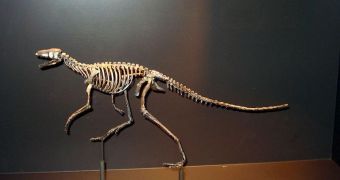A new scientific idea proposes that the main reason why dinosaurs were so able to endure for millions of years was the fact that most of them were warm-blooded, rather than cold-blooded, as average lizards are. Scientists propose that this trait allowed for them to evolve into the myriad of shapes and sizes that the fossil records indicate existed on Earth during earlier ages. The new hypothesis argues decades of established scientific knowledge, LiveScience reports.
For years, anthropologists and paleontologists have believed that the dinosaurs were highly similar to lizards. One of these similarities, they thought, was the fact that dinosaurs had cold blood, which would have meant that their temperatures rose and fell with the ambient temperature. This is the way lizards get by even today and experts had no reason to believe that things were different millions of years ago. On the other hand, birds are warm-blooded. And, seeing how birds evolved directly from dinosaurs, some say it may not be such a stretch to assume some of the creatures indeed had warm blood as well.
“My work examines how differences in limb anatomy lead to differences in the energy cost of walking and running. As we get better at understanding these fundamental relationships, we'll be able to extract more and more information about the physiology and life of extinct species, just from analyzing their skeletons. We'll be able to know more and more about how they lived, not just what they looked like,” Washington University in St. Louis biomechanist and researcher Herman Pontzer says.
Other researchers note that favoring factors must have been at work throughout the dinosaurs' history, because otherwise their reign – spanning more than 160 million years – cannot be explained. Of 13 recently-analyzed fossils, at least five, if not all, were determined to have been warm-blooded, athletic creatures, which means that far larger numbers may have existed, that were not preserved in fossils. Details of the new idea appear online, in the November 10 issue of the open-access scientific journal PLoS ONE. The warm blood may have allowed the creatures to occupy the entire world.

 14 DAY TRIAL //
14 DAY TRIAL //